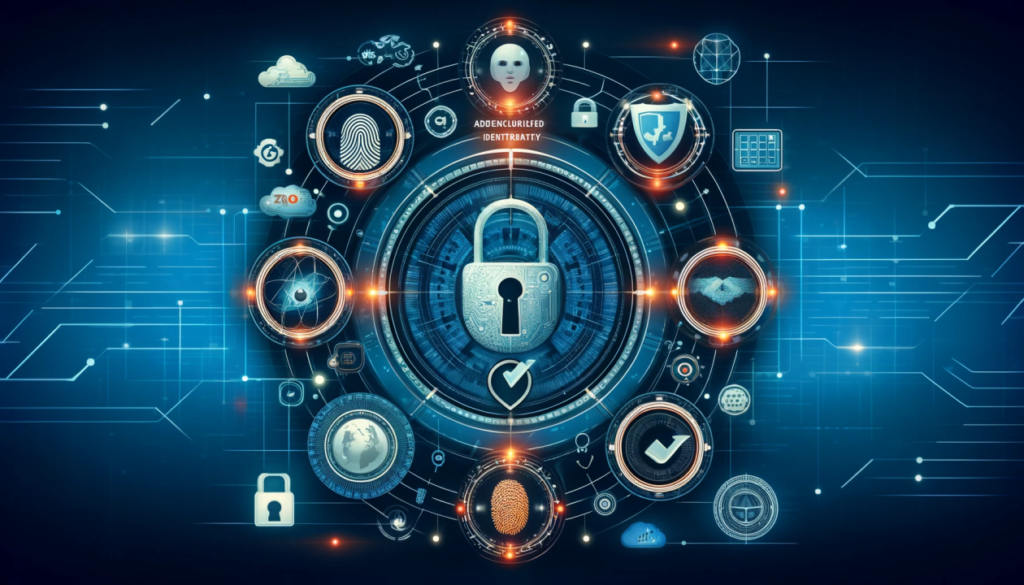
Introduction
In today’s digital era, organizations face mounting challenges in managing user identities and access to third-party applications. Identity Governance and Administration (IGA) offers a robust framework to effectively address these challenges, ensuring streamlined operations, enhanced security, and compliance. This blog explores why IGA is indispensable for managing access to third-party applications and how modern solutions like BAAR-IGA tackle these complexities.
Importance of IGA
IGA empowers security administrators to oversee user identities and access across the enterprise. By providing visibility into access privileges and identities, IGA facilitates the implementation of necessary controls to prevent inappropriate access. As enterprises increasingly adopt multi-cloud and on-premises environments, the volume of data, users, and devices grows, creating a complex IT security ecosystem. Without effective IGA, users may gain unnecessary or excessive access to third-party applications, significantly increasing the risk of cyber threats, data breaches, and compliance violations. Implementing a robust IGA solution enables organizations to:
Problems with Traditional IGA for Solving Third-Party Challenges
Legacy IGA systems, designed for on-premises environments, struggle to handle the demands of modern IT landscapes. Maintaining access to third-party applications was particularly challenging, as these systems relied heavily on manual processes. Organizations faced significant hurdles, such as:
Today, users often have multiple IDs across various access points, creating opportunities for human error and over-provisioning. The influx of new hires, role changes, and terminations further overwhelms traditional systems. Disjointed SaaS applications generate additional challenges, as organizations struggle to track user access effectively.
How Modern IGA Solutions Address Third-Party Application Challenges
Centralized IGA platforms offer a suite of features that streamline user lifecycle management and enhance security, efficiency, and compliance. Key benefits of modern IGA solutions include:
1. Streamlined User Lifecycle Management
Modern IGA solutions automate critical processes, ensuring efficient and accurate user lifecycle management:
2. Enhanced Visibility and Controls
Improved IGA systems provide comprehensive insights into user access:
3. Strengthened Security
Third-party applications often integrate with sensitive business systems, introducing potential vulnerabilities. IGA systems bolster security by:
4. Improved Operational Efficiency
Automation reduces manual workloads for IT teams:
BAAR-IGA Features for Managing Third-Party Applications
BAAR-IGA offers a comprehensive suite of features designed to address third-party application challenges efficiently and securely:
1. Centralized Access Management
2. Lifecycle Management
3. Self-Service Capabilities
4. Access Reviews and Certifications
5. Compliance and Audit Support
6. Third-Party Collaboration Management
7. Advanced Integration Options
Conclusion
The integration of modern IGA solutions is crucial for managing access to third-party applications in today’s complex digital environments. By automating processes, enhancing visibility, and strengthening security, IGA systems ensure organizations maintain compliance and mitigate risks. Platforms like BAAR-IGA provide a comprehensive toolkit for effective identity governance, empowering organizations to manage access efficiently and securely.
In today’s digital era, organizations face mounting challenges in managing user identities and access to third-party applications. Identity Governance and Administration (IGA) offers a robust framework to effectively address these challenges, ensuring streamlined operations, enhanced security, and compliance. This blog explores why IGA is indispensable for managing access to third-party applications and how modern solutions like BAAR-IGA tackle these complexities.
Importance of IGA
IGA empowers security administrators to oversee user identities and access across the enterprise. By providing visibility into access privileges and identities, IGA facilitates the implementation of necessary controls to prevent inappropriate access. As enterprises increasingly adopt multi-cloud and on-premises environments, the volume of data, users, and devices grows, creating a complex IT security ecosystem. Without effective IGA, users may gain unnecessary or excessive access to third-party applications, significantly increasing the risk of cyber threats, data breaches, and compliance violations. Implementing a robust IGA solution enables organizations to:
- Control and track access across cloud-based and on-premises systems.
- Securely provide the right users with appropriate access to the right systems.
- Maintain compliance by implementing necessary controls to mitigate security risks.
Problems with Traditional IGA for Solving Third-Party Challenges
Legacy IGA systems, designed for on-premises environments, struggle to handle the demands of modern IT landscapes. Maintaining access to third-party applications was particularly challenging, as these systems relied heavily on manual processes. Organizations faced significant hurdles, such as:
- Managing access for non-employees, including contractors and supply chain partners.
- Relying on Identity and Access Management (IAM) staff to manually provision, de-provision, and secure access.
- Adapting to the explosion of cloud infrastructure, endpoints, and third-party applications.
Today, users often have multiple IDs across various access points, creating opportunities for human error and over-provisioning. The influx of new hires, role changes, and terminations further overwhelms traditional systems. Disjointed SaaS applications generate additional challenges, as organizations struggle to track user access effectively.
How Modern IGA Solutions Address Third-Party Application Challenges
Centralized IGA platforms offer a suite of features that streamline user lifecycle management and enhance security, efficiency, and compliance. Key benefits of modern IGA solutions include:
1. Streamlined User Lifecycle Management
Modern IGA solutions automate critical processes, ensuring efficient and accurate user lifecycle management:
- Onboarding: Predefined access roles simplify new user integration with third-party applications.
- Offboarding: Automated processes revoke access for terminated users, reducing misuse risks.
- Access Amendments: Seamless adjustments accommodate project or role changes.
2. Enhanced Visibility and Controls
Improved IGA systems provide comprehensive insights into user access:
- Holistic views of which users have access to specific third-party applications and why.
- Identification of access redundancies and potential security gaps.
- Risk scoring to prioritize mitigation efforts.
3. Strengthened Security
Third-party applications often integrate with sensitive business systems, introducing potential vulnerabilities. IGA systems bolster security by:
- Enforcing Role-Based Access Controls (RBAC) to restrict users to necessary resources.
- Conducting regular access reviews to remove unnecessary privileges.
- Maintaining audit trails for access requests and modifications to detect suspicious activities.
4. Improved Operational Efficiency
Automation reduces manual workloads for IT teams:
- Faster provisioning and de-provisioning of access to third-party applications.
- Centralized management reduces errors and streamlines policy enforcement.
- Self-service capabilities allow users to request access while maintaining governance.
BAAR-IGA Features for Managing Third-Party Applications
BAAR-IGA offers a comprehensive suite of features designed to address third-party application challenges efficiently and securely:
1. Centralized Access Management
- Manage access to multiple third-party applications from a single interface.
- Seamless integration with applications via API, SFTP, UI, and database connectors.
- Define and enforce access policies based on user roles and responsibilities.
- Configure custom access policies, including segregation of duties and least privilege principles.
2. Lifecycle Management
- Assign appropriate access to new users using predefined templates.
- Immediately revoke access for terminated users.
- Manage role-based access adjustments effectively.
- Provide temporary access to contractors and external users as needed.
3. Self-Service Capabilities
- User-friendly portal for requesting access to third-party applications.
- Configurable workflows streamline access approvals.
- Empower managers to approve access requests within their teams.
4. Access Reviews and Certifications
- Schedule and conduct regular user access reviews.
- Verify and certify access to third-party applications for internal audits and regulatory compliance.
5. Compliance and Audit Support
- Maintain detailed logs of access-related activities for third-party applications.
- Generate reports on user activities and access.
- Enforce policies such as Active Directory expiration policies on third-party applications.
6. Third-Party Collaboration Management
- Provide secure access to third-party applications for external users, including vendors and contractors.
- Restrict access to specific features and data.
- Revoke access immediately when no longer needed.
7. Advanced Integration Options
- Pre-built connectors for popular third-party applications like Office 365.
- Custom connector configuration using database queries and APIs.
- Real-time synchronization of user access with changes in third-party systems.
Conclusion
The integration of modern IGA solutions is crucial for managing access to third-party applications in today’s complex digital environments. By automating processes, enhancing visibility, and strengthening security, IGA systems ensure organizations maintain compliance and mitigate risks. Platforms like BAAR-IGA provide a comprehensive toolkit for effective identity governance, empowering organizations to manage access efficiently and securely.



